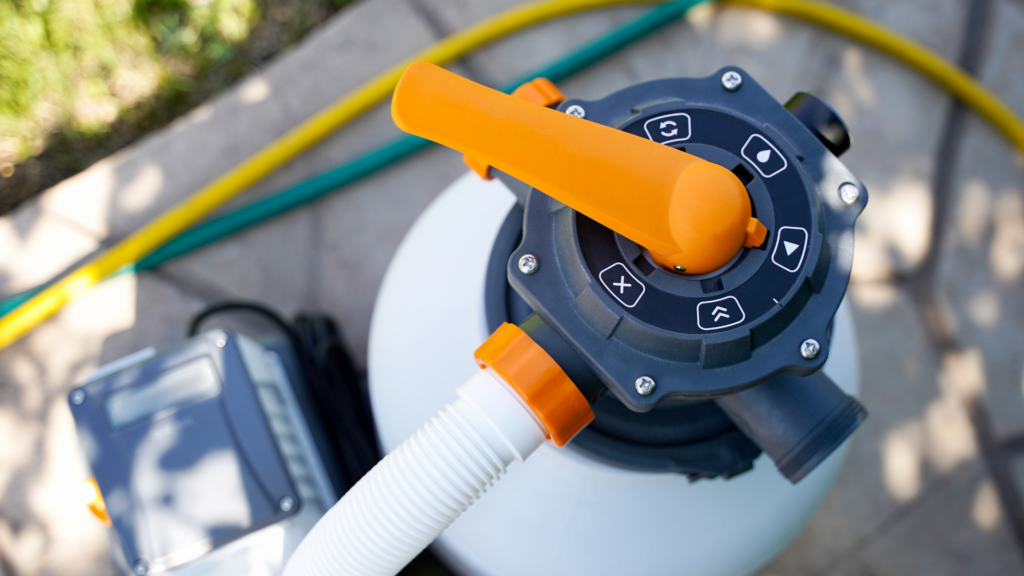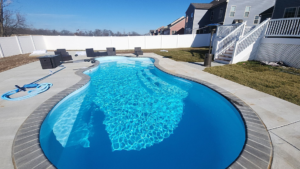Maintaining a crystal-clear swimming pool requires more than just regular cleaning and chemical balancing. One crucial aspect of pool maintenance that often goes overlooked is the condition of the pool filter. Among the various types of pool filters, sand filters are widely used due to their effectiveness and ease of maintenance. However, to ensure optimal performance, it’s essential to know how often to change the sand in your pool filter. In this comprehensive guide, we will dive into the factors influencing how often to change sand in your pool filter and provide valuable insights to keep your pool water pristine.
Understanding the Role of Pool Filters
Pool filters play a pivotal role in keeping your swimming pool water clean and safe. They are responsible for trapping impurities, debris, and contaminants that can accumulate in the water. Among the three main types of pool filters – sand, cartridge, and diatomaceous earth (DE) filters – sand filters are popular for their simplicity and cost-effectiveness.
Sand filters contain a bed of specially graded sand that captures particles as water passes through. Over time, the trapped debris and contaminants reduce the filter’s efficiency, necessitating maintenance and, eventually, sand replacement.
Factors Influencing Sand Replacement Frequency
Several factors contribute to the rate at which sand in a pool filter needs to be replaced. Understanding these factors will help you determine a suitable maintenance schedule for your specific pool setup.
- Pool Usage:
- The frequency of pool use directly impacts the accumulation of debris and contaminants in the water. Pools that are used frequently may require more frequent sand replacement.
- Pool Size:
- Larger pools tend to collect more debris and contaminants, placing a heavier burden on the pool filter. As a result, the sand in larger pool filters may need replacement more often than in smaller ones.
- Filter Size:
- The size and capacity of your pool filter matter. A filter that is appropriately sized for your pool will handle the water volume more efficiently, potentially extending the lifespan of the filter media.
- Water Quality:
- The quality of your water source and the surrounding environment can affect how quickly debris accumulates in the pool. Pools located near trees, for example, may require more frequent filter maintenance.
- Chemical Balance:
- Maintaining the right chemical balance in your pool water is crucial. Imbalances can lead to the formation of scale or algae, reducing the effectiveness of the filter and necessitating more frequent sand changes.
- Filter Run Time:
- The duration for which your pool filter runs each day influences its workload. Longer filtration cycles may result in quicker sand deterioration, while shorter run times could extend the lifespan of the sand.
Determining the Right Time for Sand Replacement
While the factors mentioned above provide a general guideline, it’s essential to pay attention to specific signs indicating the need for sand replacement in your pool filter:
- Decreased Water Clarity:
- If your pool water is no longer as clear as it used to be, despite regular chemical maintenance, it may be a sign that the sand filter is struggling to trap impurities effectively.
- Increased Backwashing Frequency:
- Frequent backwashing is a common maintenance practice for sand filters. However, if you find yourself backwashing more frequently than usual, it may indicate that the sand has lost its filtration capacity.
- High Filter Pressure:
- An abnormally high pressure reading on your filter’s pressure gauge suggests a blockage in the system. This could be due to sand particles that have clumped together or become too fine to effectively filter the water.
- Visible Debris in the Pool:
- If you notice visible debris floating in your pool or accumulating on the pool floor despite proper filtration, it may be a sign that the sand filter is no longer performing optimally.
- Older Filter Media:
- Over time, the sand in your filter will wear down and become less effective. If you’ve been using the same sand for several years, it’s a good idea to consider replacing it, even if you haven’t noticed any specific issues.
Steps to Replace Sand in Your Pool Filter
When you’ve determined that it’s time to change the sand in your pool filter, follow these step-by-step instructions for a successful replacement:
- Turn Off the Pump:
- Before performing any maintenance on your pool filter, turn off the pump to ensure your safety and prevent any damage to the system.
- Release Pressure:
- Open the air relief valve on top of the filter to release any built-up pressure.
- Drain the System:
- Depending on your filter model, you may need to drain the water from the filter tank. Refer to your filter’s manual for specific instructions.
- Remove the Multiport Valve or Tank Cover:
- If your filter has a multiport valve, turn it to the “Closed” position before removing it. For filters with a tank cover, use a wrench to loosen and remove the cover.
- Scoop Out the Old Sand:
- Use a scoop or your hands to remove the old sand from the filter tank. Dispose of the old sand properly, considering any local regulations.
- Inspect the Laterals:
- While the tank is empty, inspect the laterals at the bottom of the tank for any damage. Replace any damaged or broken laterals.
- Add New Sand:
- Add the appropriate amount of new, specially graded pool filter sand to the filter tank. Consult your filter’s manual for the correct sand type and quantity.
- Reassemble the Filter:
- Once the new sand is in place, reassemble the filter by securing the multiport valve or tank cover back onto the filter tank.
- Backwash and Rinse:
- Perform a backwash and rinse cycle to remove any fine particles from the new sand and ensure proper settling.
- Restart the Pump:
- Turn the pump back on and monitor the filter’s pressure gauge. Ensure that the pressure remains within the recommended range for your specific filter model.
- Check for Leaks:
- Inspect the filter system for any leaks, and address them promptly if detected.
- Adjust Chemical Balance:
- After replacing the sand, test and adjust the chemical balance of your pool water to maintain water clarity and prevent future issues.
How Often To Change Sand In Pool Filter
Regular maintenance of your pool filter, including knowing how often to change the sand, is crucial for enjoying a clean and inviting swimming pool. By understanding the factors influencing sand replacement frequency and recognizing the signs of a declining filter performance, you can proactively manage your pool’s maintenance needs.
Remember, a well-maintained pool filter not only ensures clear water but also contributes to the longevity of your pool equipment. By following the steps outlined in this guide and staying attuned to your pool’s specific requirements, you’ll be well on your way to a consistently refreshing and enjoyable swimming experience. For all your fiberglass pool needs, contact us at Splash Fiberglass Pool Co.!

Sean Locklear spearheads Splash Fiberglass Pool Co., where his passion for creating the perfect backyard oasis drives the company’s success. Specializing in high-quality fiberglass pools, Sean’s approach combines innovative design with functionality, ensuring each pool installation enhances outdoor living spaces. Under his leadership, Splash Fiberglass Pool Co. is dedicated to delivering dream pools that are durable, low maintenance, and beautifully crafted, providing expertise on the benefits of fiberglass pools and customized design options.







